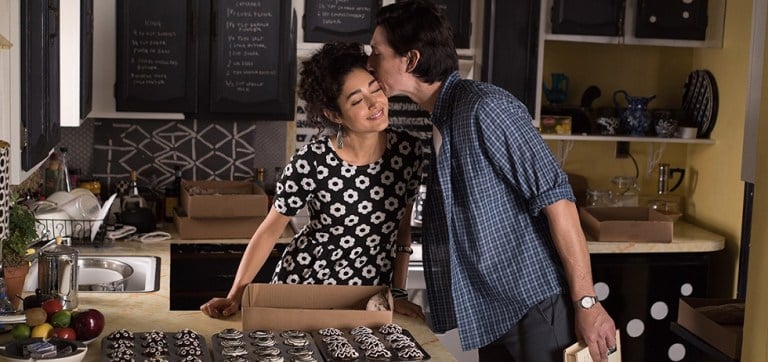Another year, another batch of great films. Some are pop gems (“Baby Driver,”) some weren’t as heavily pushed as they should have been (“Dawson City,” “A Quiet Passion”). All of them are absolutely worth your time.
My favorite films list is presented in alphabetical order, except #1—which was my absolute favorite. No. 1 is technically a 2016 film (its official US release date was December 28, 2016), but I’m including it in 2017 because that’s when most would have watched it. My three favorites from this year—”Paterson,” “A Quiet Passion,” “The Red Turtle”—all deal explicitly in poetry. They struggle to find a way of communicating the literary-poetic into the cinematic, no small order. Luckily, they succeed beyond the wildest aspirations.
N.B.: I do not include David Lynch’s and Mark Frost’s “Twin Peaks: The Return,” which was the best moving-picture thing of the year. It is neither film nor TV; it is something much stranger, more wonderful. It belongs in its own category. I’ve written extensively about it for the San Francisco Chronicle here. This is a major work you’d be doing yourself a disservice in skipping. Of course, it requires a knowledge of the original two-season series from 1990-91 and Lynch’s furiously personal feature-film prequel “Twin Peaks: Fire Walk With Me” (1992).
I specify this as a list of personal favorites that I was able to watch — and not simply “the best of 2017.” To attest “best” status is to assume you’ve seen all or most of the films that come out in any given year in the same year — and that’s just not possible. Hell, we’re still trying to catch up with 1933.
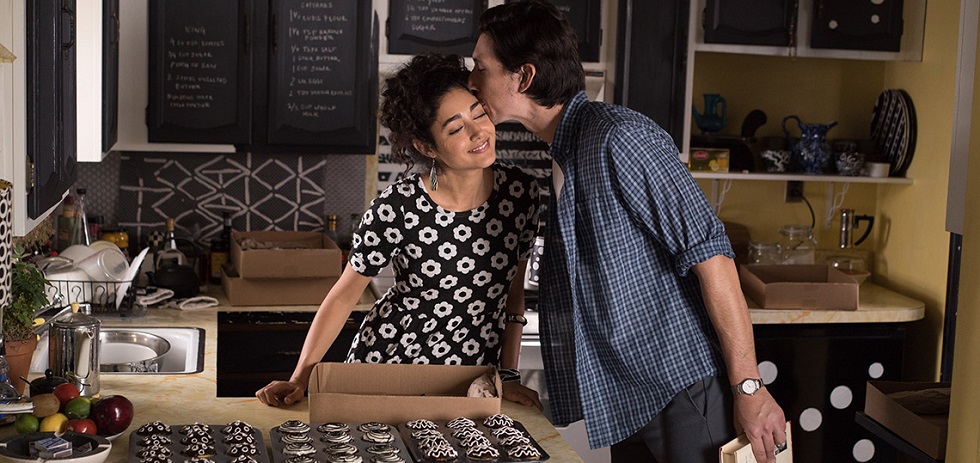
1. “Paterson,” written and directed by Jim Jarmusch
Elia Kazan once gave a great piece of advice that informs Jim Jarmusch’s achingly poetic masterpiece of the ordinary: Never take a taxi cab (or an Uber, or a Lyft) if you can take the bus. Buses attract oddballs from all corners of life; they are breeding grounds for observation, specificity and knowledge of the world beyond one’s bubble.
The poet-hero of “Paterson” (Adam Driver) is a bus driver. He is named after the New Jersey city in which he works, and the William Carlos Williams poem that guides him. Paterson is in the unique position to hear people’s everyday thoughts: what are anarchists, construction workers, and twins planning? He has a strict daily routine, but in the blissed-out and pleasant meanders of 118 minutes, he finds endless variety. Every night he walks his French bulldog Marvin; every night, he leaves Marvin outside a bar, has one glass of beer, and chats up the encyclopedic Doc, the Black owner of this mostly-Black-establishment bar. He never knows when his next bar visit will end with a suicidal man pulling a gun on himself, because he can’t imagine a world without the woman he loves.
In “Paterson,” everyone is hung up on love, artistry and the pursuit of both. The film believes that everyone has limitless poetic potential — if they know how to tune their eyes and ears to life’s exact frequency. “Paterson” makes you want to create —passionately, tearfully, lovingly. The big question: Is creation of poetry enough? Or does it have to be “out in the world”—known en masse, published — to be successful? Is it enough to just keep creating and never let anyone know who you are? Or should you reach for the renown of a William Carlos Williams? The private and the public clash in profound ways in “Paterson,” a film that makes you feel alive to the possibility of beauty in an ugly, self-enclosed America.
Forgive me for not being able to convey the gobsmacking amazing experience of watching “Paterson.” It is the most ambitious new film I’ve seen, and the one that has made me feel like maybe, if a filmmaker watches it, America won’t be so deadened and uncaring in its view of art.
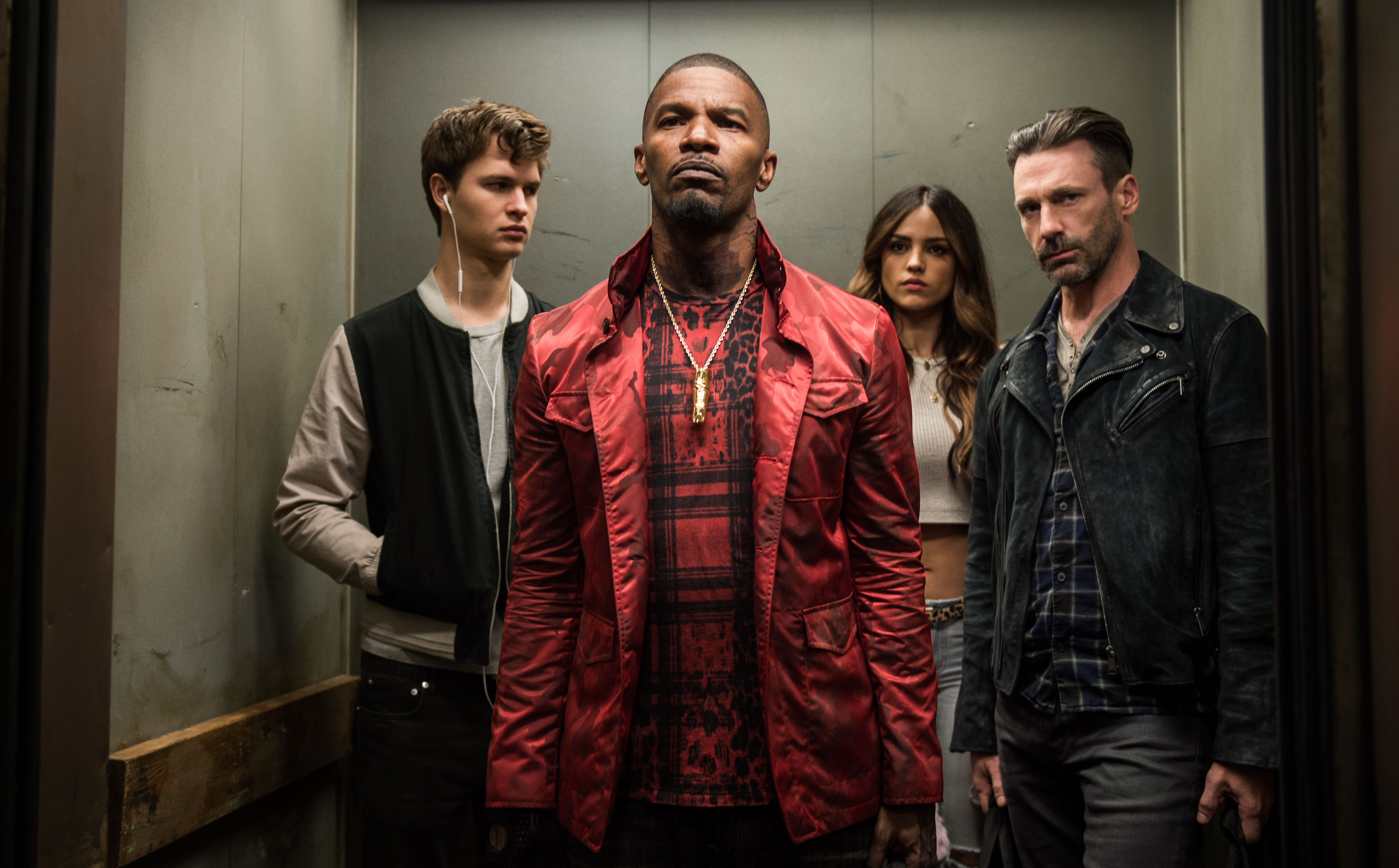
“Baby Driver,” written and directed by Edgar Wright
Still a damn delight. Edgar Wright understands why we need musicals. His “Baby Driver” is a sharply felt film seriously in love with pop. With the proliferation of Spotify and other various digital-era ways of listening to music, Wright knows we live in the glorious (?) age of the Walking Musical. It explores how it feels to be stuck between two modes of living: lonely silence and bursts of emotional energy.
“Baby Driver” continues Edgar Wright’s love of smart surface. There’s barely time to stop and dwell on the images, which flick by with a rapid yet clear sense. Wright sees dancing and walking as inseparable—two modes of the same inexpressible emotions, ones that the cinema can best capture. In that vein, one of the best moments is when Ansel Elgort kicks a sheet of newspaper into the air to the tune of Commodores’s “Easy.” The move morphs into a dance figure, not fully formed, and is soon forgotten amid Wright’s kinetic shots. But for a brief moment, Elgort and Wright discover the bridge between the all-dancing ideal of a movie musical and the real world. We must dance, it is natural, and, with a little help from our iPod or our Spotify, we shall dance.
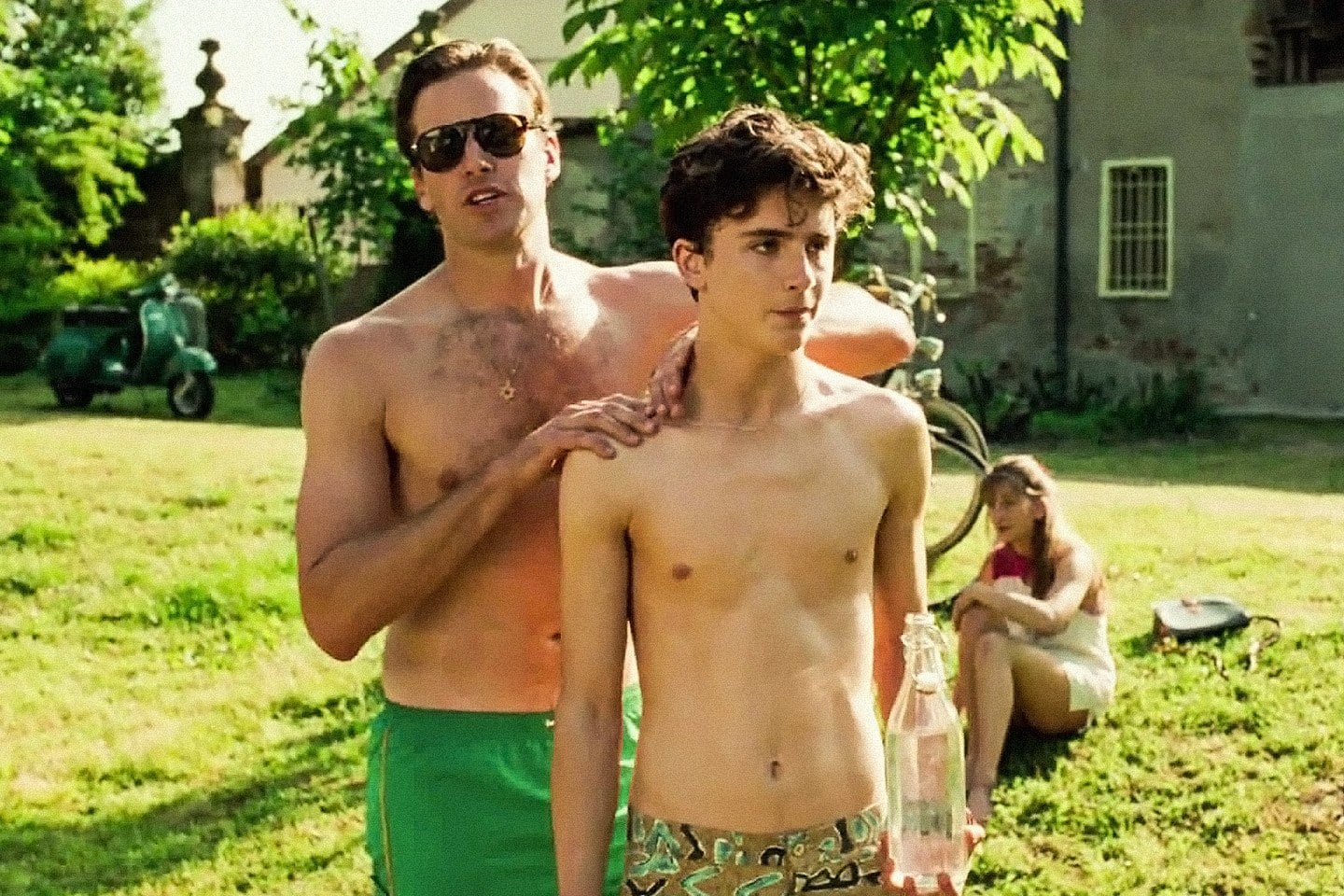
“Call Me by Your Name,” directed by Luca Guadagnino, written by James Ivory, based on the novel by André Aciman
An aching memory film about a romance which fades even as it unfolds. Thai cinematographer Sayombhu Mukdeeprom (“Uncle Boonmee”) captures fleeting snatches of sunlight, sweat and cum on the skins of actors, unafraid and unbashful.
The story unfolds not through declamatory speeches, nor flashy displays of technique, but in sudden stops and starts, burrowing erratically into the love that grows between a 17-year-old on the cusp of leaving innocence (Timothée Chalamet) and the grad student hunk (Armie Hammer) who thrusts him into experience.
Director Luca Guadagnino refuses the easy image; he makes you scan this softly lit Northern Italian world, as in the breathtaking long-take (4+ minutes in length) where Maurice Revel’s “Une barque sur l’ocean” fills the air, and the camera dances around the men’s desires like a deleted scene from Godard’s “Contempt.” Chalamet and Hammer smoke quietly and without fuss, but the piano tinkles and hurls down on them like a monsoon; the image is placid on the surface, but great waves (of desire, of sex, of the need to be loved by another human) rage underneath. Later, it all gushes forth in the scene where (spoiler?) Chalamet furiously masturbates into a peach, an intense scene of frustrated desires.
Guadagnino knows this landscape won’t move without precisely deployed support. So adding definition to the delicate Hammer-Chalamet foreground are Michael Stuhlbarg as the father who mourns his youth by comforting his son in a Eric Rohmer-like monologue; Esther Garrel, the young French crush whose pathetic naïveté (same) is played straight and without a hint of condescension; and Amira Casar, who projects a respectful coyness about the sex her son is having (the beauty is that neither Dad nor son are sure how much Mom knows; Dad assumes nothing, but we have a hunch it’s more than she lets on).
Add in the songs by Sufjan Stevens, and it becomes a haunted musical about unattainable dreams that, like “Baby Driver,” takes place in the loneliest recesses of a lovesick mind. “I think of you as my brother, although that sounds dumb.”
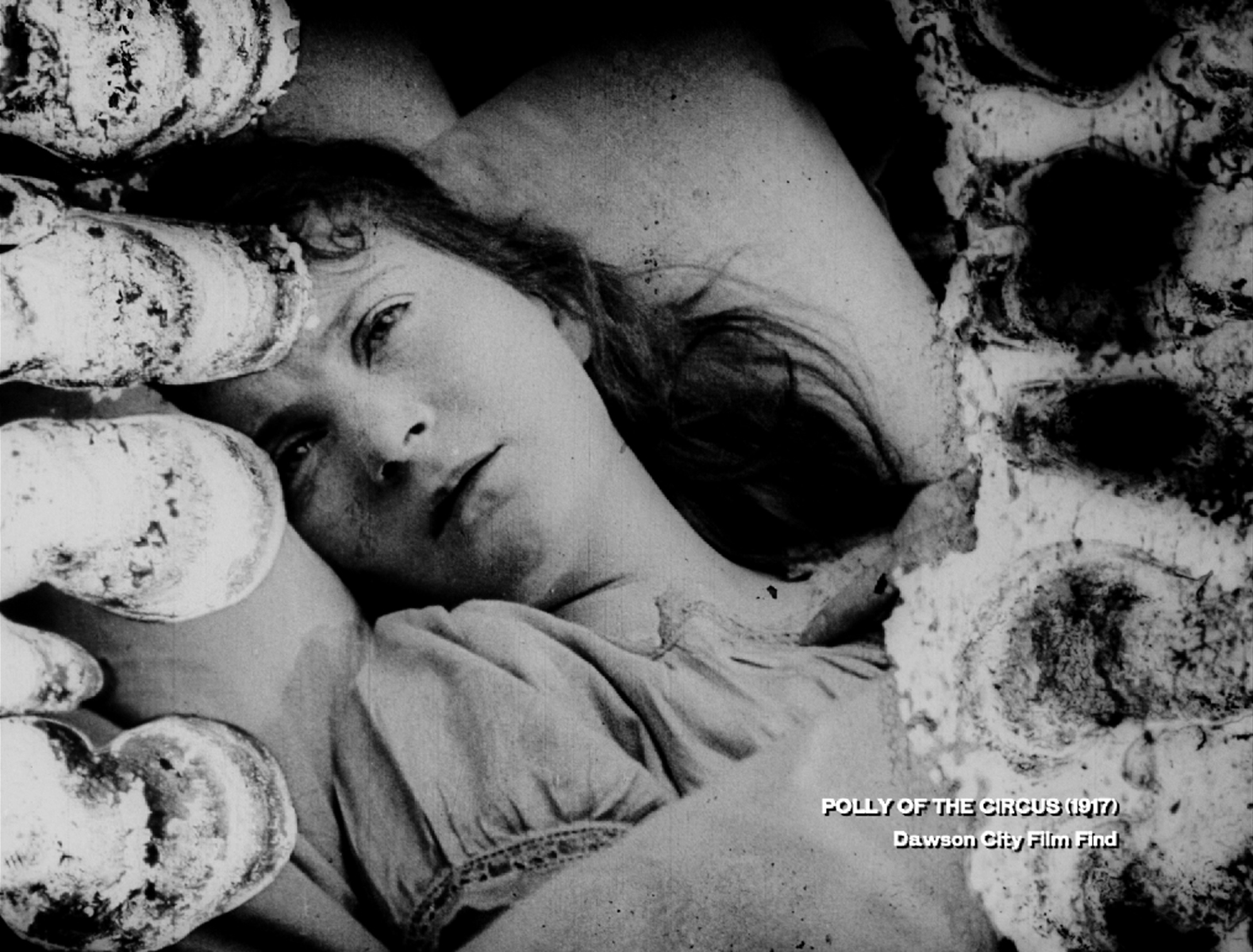
“Dawson City: Frozen Time,” written, directed, edited and co-produced by Bill Morrison
An unconventional documentary, which reminds us of the fragility of cinema history.
Bill Morrison has made a career out of avant-garde explorations of physical silent film — decaying, rotting, worn out after years of improper storage. Now, he turns his eye to a story that sounds too good to be real. In 1978, a cache of more than 500 silent films (thought to be lost) was discovered beneath the swimming pool of an old athletic center in Dawson City, Canada. Here was the final resting place of thousands of feature films produced by Hollywood; since it was so far up north, the studios never recalled their prints. So for years and years, hard-to-find silent films lay in Dawson City, a testament to a rich history in danger of going up in nitrate flames.
The film is a three-part endeavor: a history of Dawson City, which was caught up in the Klondike Gold Rush at the turn of the 20th century; a look at the silent footage unearthed at Dawson City; and an exploration of cinema’s physical history.
Bill Morrison had made a work so obsessed with the past, it actually feels more present than anything else I’ve seen this year. Think of what we take for granted as a critical part of how we consume information and knowledge of the world today. Now think how this will all be erased in the future, only understood by a few fringe folks who make it their lives’ mission to accurately render our lives. And in the future, the majority of folks will simply not care. That’s the incline Morrison is up against.
In 2013, the Library of Congress issued a report estimating that nearly 70 percent of all American silent films are considered lost. Such a profound loss is unimaginable; such a fortuitous rescue of that precious history in Dawson City, even more so.
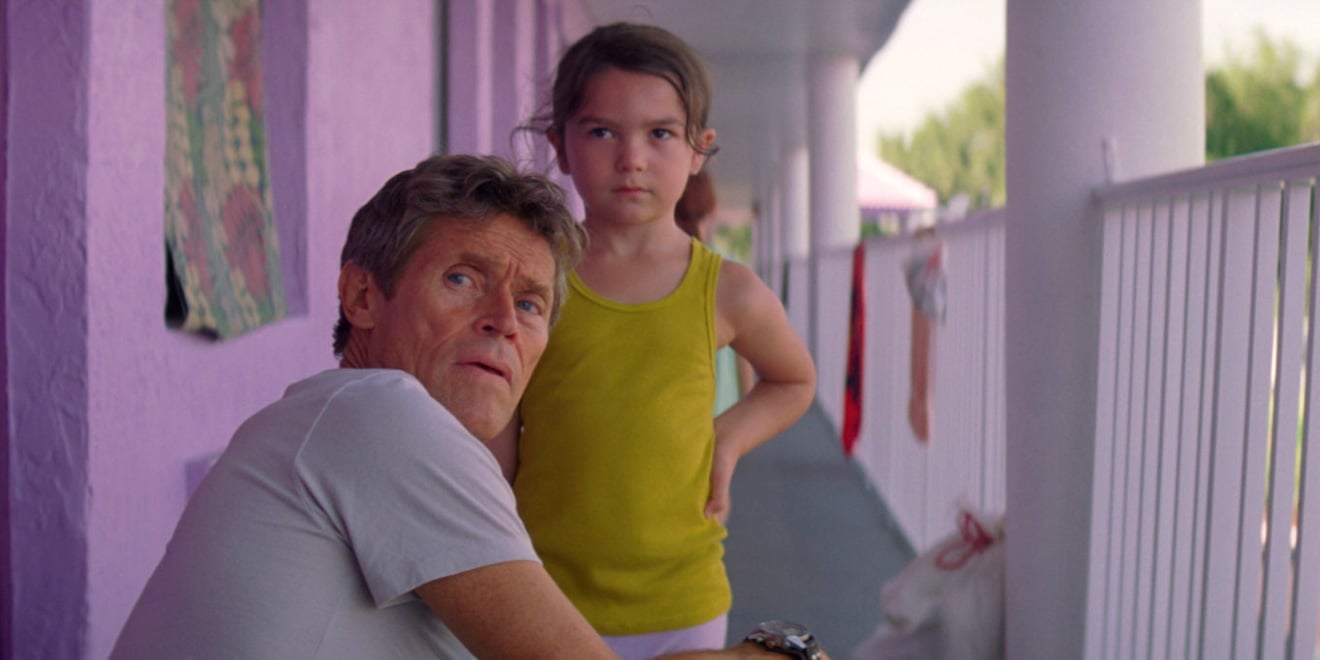
“The Florida Project,” directed by Sean Baker, written by Baker and Chris Bergoch
Sean Baker proves himself one of the most insightful and loving American filmmakers working in the present day. The proof is in 2012’s “Starlet,” 2015’s “Tangerine” (which was one of my top films of that year), and now “The Florida Project.” It’s a nice pun: set in the ‘projects’ in Kissimmee, Florida, a run-down community of motel tenants right outside of a Disney World. But it is also Baker and company’s hilarious and serious project: a project to conjure up a world rarely seen on the screen, one which is done in an unusually free-narrative style of ragtag sketches and a disciplined refusal to let the audience know what they should be made to feel, and how they should judge a character.
Baker has described his Florida project as a modern update of Hal Roach’s “Our Gang”—those little rascals and their Depression-era misadventures. Indeed, much of the film’s strength lies in its kid ensemble, especially six-year-old Moonee (Brooklynn Prince). The father figure is the motel manager, Willem Defoe’s patient Bobby. The mother is Bria Vinaite, who is a heady mix of irresponsible, immature and fun. Yet the real villain is not this woman whom society pegs as a trash-talking, Worldstar sex worker with scandy booty shorts — no, instead, it’s the incredibly annoying Portuguese tourists, the security guards who try to keep up a morally bankrupt façade by driving the poor off their property with golf carts.
Brooklynn Prince’s rambunctious energy reminds me of 14-year-old Jean-Pierre Léaud in his and François Truffaut’s debut, “The 400 Blows” (1959). Prince’s snap looks, sassy talk-backs and impishly-turned-up nose are tightly controlled, applied to a character that defies easy box-checking.
Is it a comedy? An escapist film? A 2017 update of a Great Depression tragedy like 1933’s “Wild Boys of the Road”? A committed look at poverty in a realistic vein? A class fantasy gone wild with a sugar rush from the tutti-frutti section of a Baskin-Robbins? It’s all of these.
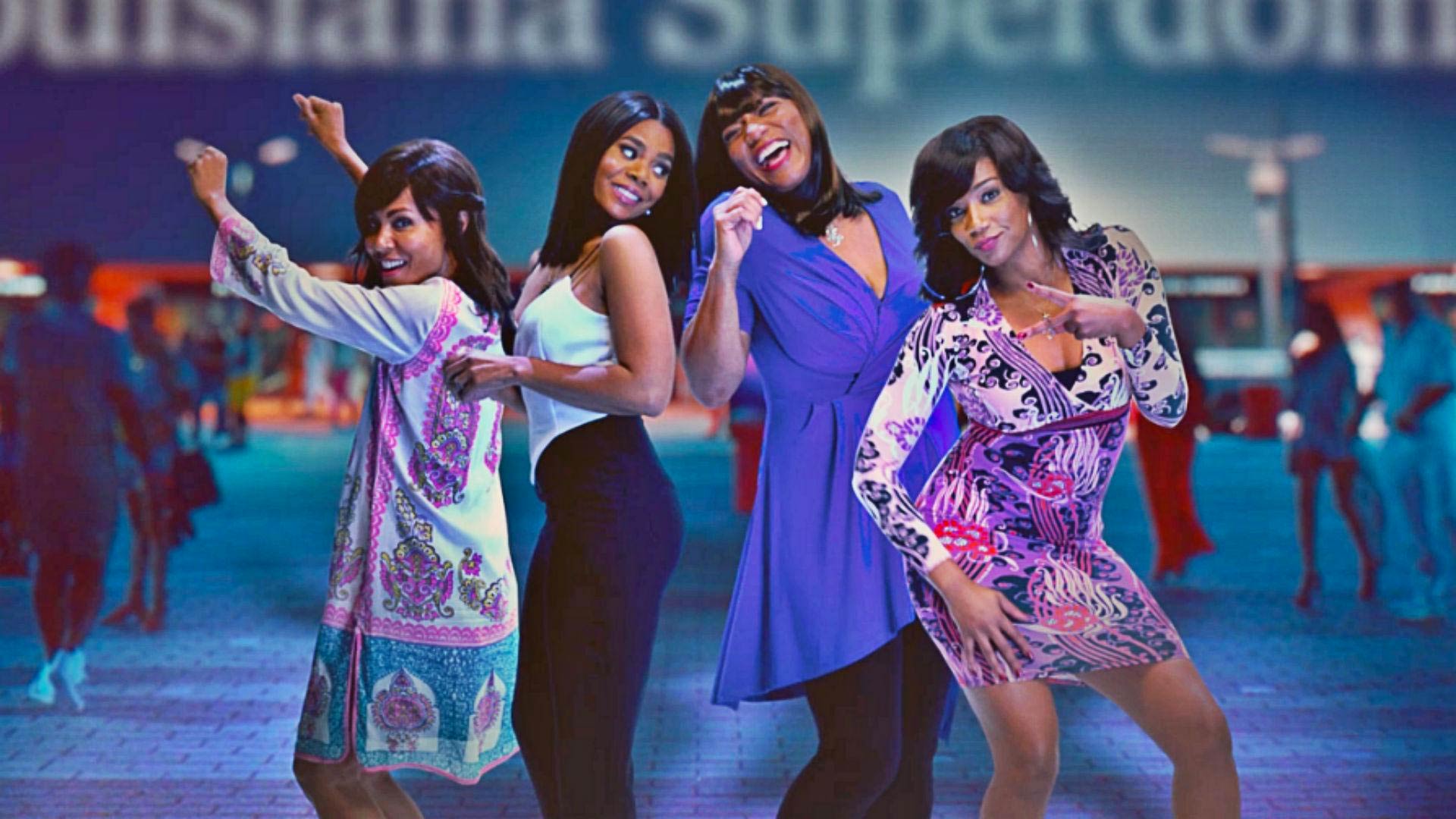
“Girls Trip,” directed by Malcolm D. Lee, written by Tracy Oliver and Kenya Barris
Easily the funniest movie I saw this year, and (along with “Baby Driver”) the most fun I had in a movie theater. “Girls Trip” is shrewd, vulgar, committed and knowing. Its love of raw laughter, at any costs, is all that matters with an ensemble as tightknit as this: Regina Hall, Queen Latifah, Jada Pinkett Smith — each a vivid character, never a type. Tiffany Haddish gives the best physical and knockabout comic performance in a while; she deserves all the Oscars I’m sure she won’t get. (Will she even be nominated? If the Academy actually cared about good pop film work, they would seriously consider her.) The occasional hokeyness, especially near the end, deserves a pass, because this is a comedy about the pains black women must endure to cultivate some sort of public success in this country. In other words, it is radically frivolous. To recognize the brilliance of “Girls Trip” is to defeat the default condemnation of comedy as something escapist and un-serious.
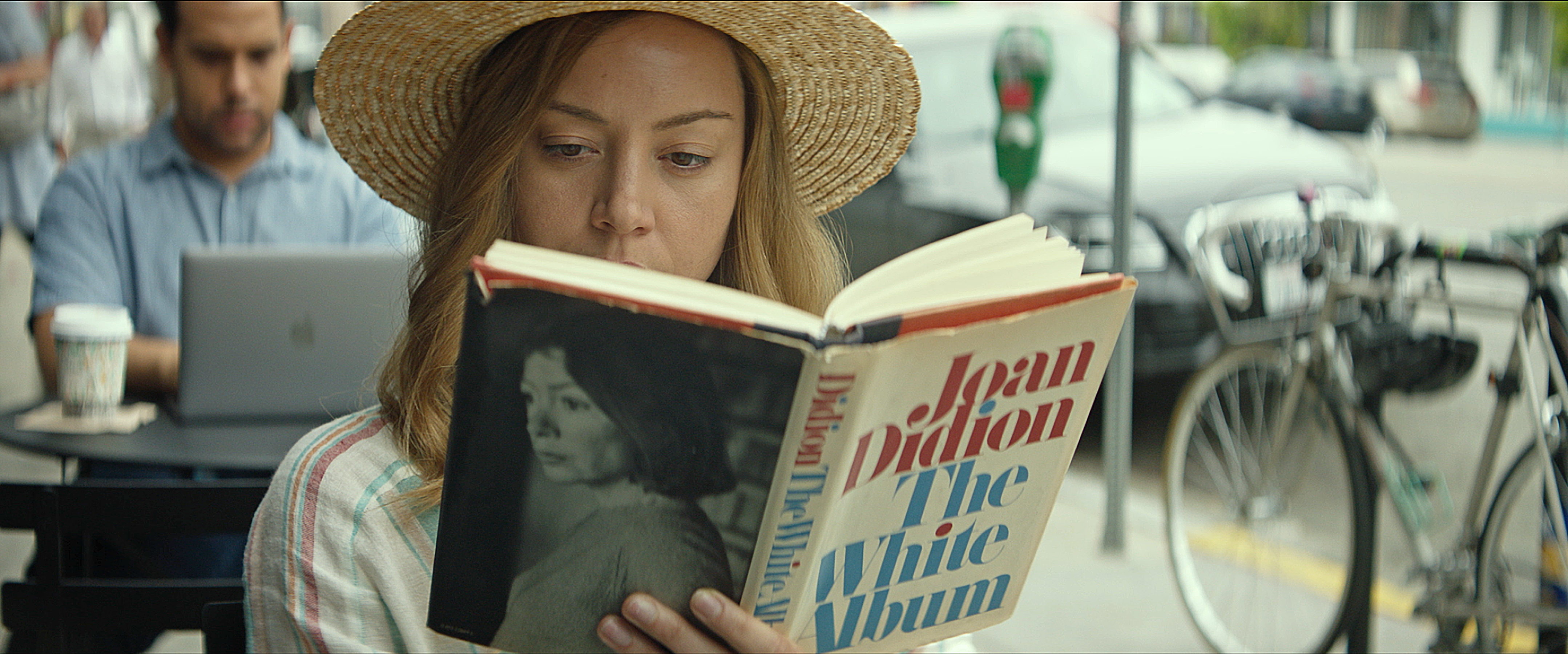
“Ingrid Goes West,” directed by Matt Spicer, written by Spicer and David B. Smith
A comedy-satire about 2010s digital disguises, Facebook masks and Insta-fakery with too many rugs to pull, so much passive aggressiveness clogging up the air. Spicer goes all the way with his miserable, absolutely hopeless depiction of social media ugliness.
What makes the picture so successful is its dark humor: A tight yet blunt script that always shows where it’s going ten scenes before it does, garishly colored period interiors that would make Frank Tashlin and Jerry Lewis weep with envy, a cast of kooks who deprive us of any sort of sympathy with them and their vapid plights. The air they breathe in is toxic. With the exception of Aubrey Plaza’s Ingrid, any attempt to humanize them is doomed, because they only exist on a cartooned surface, with only a motley of deadened Instagram filters allowed to creep into the flat visuals. The satire expands our minds in a proud Jerry Lewis tradition; there’s even a touch of Lewis in some of Plaza’s best physical gags, like her first encounter with Elizabeth Olson in the bookstore. We laugh and we recognize a certain vileness which exists in the peculiar world of screens we live in, one which has yet to receive a sharper movie analysis than in “Ingrid.”
Normally I’d hate the kind of glibness the ending peddles, but the subject warrants the contempt. Amazing we can see this in a multiplex theater. And it shares more in common with “Girls Trip” than I expected, right down to their ending speeches about women (Regina Hall foregrounding her authentic Blackness; Aubrey Plaza foregrounding the painful nothingness of her lonely profile picture) exposing “the real me” — a trick which ends up being even more popular with the consumer audience than expected. But there is a key difference between these two endings, which has everything to do with these films’ gravely different attitudes towards 2017 America. The revelation of “Girls Trip” is in the service of hope and love and a human desire to connect with the outside world; there’s no hope in any of the callously jokey “Ingrid” images, just a cold punchline straight out of “Taxi Driver.”
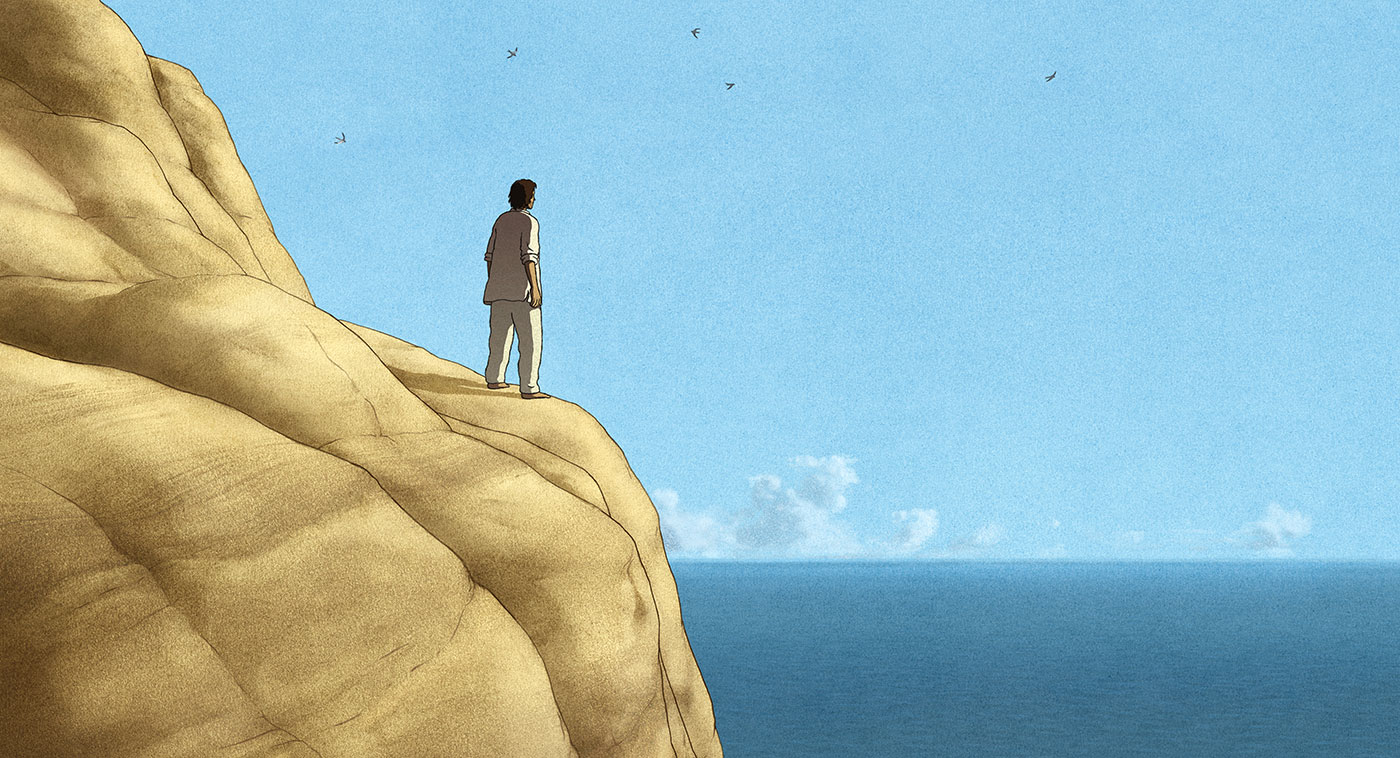
“La Tortue Rouge” (“The Red Turtle”), directed by Michaël Dudok de Wit, written by de Wit and Pascale Ferran
This year, this French animated tearjerker bowled me over the most, by which I mean I bawled. The Japanese bastion of animated masterworks, Studio Ghibli, co-produced this haunting gem, about a sailor stranded on a desert island and his encounters with the uncaring flora and unique fauna (the titular tortoise). Only one English word (“Hey!”) is screamed, so it’s essentially a silent film.
Dutch writer-director Michaël Dudok de Wit has crafted an existential fairy-tale about family, love, death, nature’s shocking neutrality, human cruelty, growing old and what the Chinese philosopher Zhuangzi saw as humanity’s cicada syndrome — our inability to stretch our minds beyond our own tiny scale. Ghibli director Isao Takahata (“Tale of the Princess Kaguya,” “Only Yesterday”) served as “artistic producer” for this venture, and in a way, it functions as a sister film to Takahata’s World War II melodrama “Grave of the Fireflies” (1988). Takahata’s aesthetic is writ large in every one of de Wit’s minimalist cels, devastating orchestral cues, and oscillations between concrete plot and abstract atmosphere. We are asked to observe the grainy smoothness of sand and endless, still horizons—how that blue heaven in the sea can swallow us up without a taste. It’s skimpy on “character” because it’s explicitly a fable — and one of immense beauty.
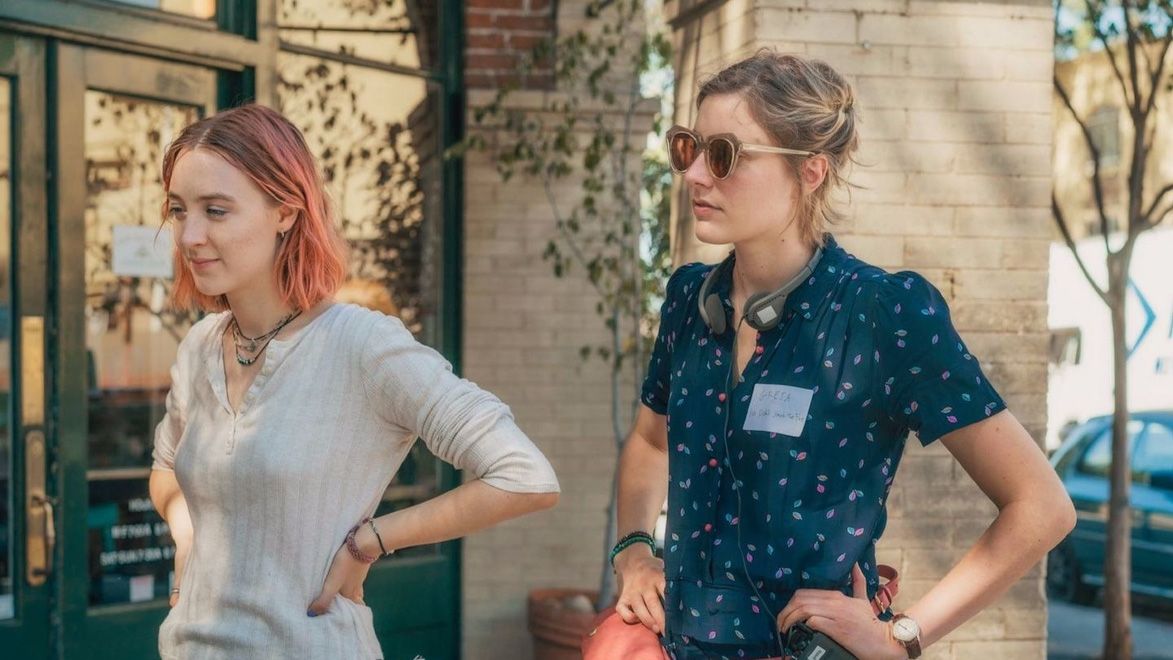
“Lady Bird,” written and directed by Greta Gerwig
Greta Gerwig makes the most relatable American film of the season because her vision is based in daring interiority. A skill mostly de-valued in popular movies today (as seen in most politically-minded middlebrow cinema with very few satisfying returns, from the sanctimonious and talky “Three Billboards” to the irresponsibly hollow spectacle of “Dunkirk”) is soft character shading: Drawing the outlines of a fictional hero in as simple and un-fussy a manner as possible, with no falling back on extraordinary events to make us care. The goal (as it is with Charles Burnett, John Cassavetes, Satyajit Ray, Kelly Reichardt, Jean Renoir et al.) is to continually search for the essence of the people one knows from one’s own self, positing a person’s raw individuality and flawed nature as the end of the artist’s search (which obviously never ends).
Gerwig works with a similar love of people: Is this true to my own self, to my own understanding of truth? She proves detail, patience and accuracy are all virtues. She is generous with her actors, boasting (along with the “Florida Project” players) this year’s tautest ensemble. Each “Lady Bird” hero (two priests, Laurie Metcalf as Lady Bird’s put-on mother, Timothée Chalamet as the pretentious hipster high-schooler that you used to want to date or befriend) has a moment to rise then recede in and out of the shimmering, washed-out background of a collective memory.
“Lady Bird” is a deftly drawn and delicate vision of a woman’s adolescence. It is non-judgmental in a completely clear-eyed way. And it has internalized emotion so well that we feel purposely mixed up. We don’t know whether to cringe, chuckle or cry during a scene, so Gerwig often makes us do all three.

“The Other Side of Hope,” written and directed by Aki Kaurismäki
The story of how an Anton-Walbrook-from-“Colonel-Blimp”-like refugee from Syria crosses paths with a Finnish restauranteur. It’s Aki Kaurismäki’s touching, oddball take on the Syrian refugee crisis. It’s like the “Three Billboards” film with intelligence, or maybe a modern equivalent of William Faulkner’s MGM film “Intruder in the Dust” (1949)—a major artist makes as clear a statement-picture as he can make. It is made explicitly so that no one will be unambiguous as to the message, yet through its sheer artistry, it skirts the talky trappings of most message-pix (cf., again, “Three Billboards,” “The Post,” “Lobster”). The proof of Kaurismäki’s artistry is his delightfully random blues-rock performances, his crisp compositions, his Jacques Tati-inspired humor. The most telling and honest line, from our refugee hero: “I fell in love with Finland — but if you find a way out of here, tell me as soon as you can.”

“Personal Shopper,” written and directed by Olivier Assayas
This Kristen Stewart-led semi-horror from Olivier Assayas is both an effective thriller and a smart deflation of its own non-logic, of the virtual emotions conjured up by movies. “Personal Shopper”‘s not-cliché hauntedness doesn’t just stay in the theater; it stalks us back to our beds.
Assayas is working through one of the generally unsung masters of silent cinema, the French director Louis Feuillade, who birthed the modern-day paranoid thriller, where an ordinary landscape hides a vast conspiracy. Feuillade’s trippy, proto-TV serials (“Les Vampires, “Fantomas,” “Judex,”) used “normal” Parisian buildings as the perfect backdrop to channel abstract fear in the modern world: abstracted through networks of masked madmen and venomous vamps. Assayas transposes that always-being-watched creepiness to the 2010s: iPhones as the new (un-)normal. Like Feuillade, Assayas suggests these bumps in the night — signs we tell ourselves mean something — might just be in our head. But are they? We’re hoodwinked time and again by Assayas/Stewart, by virtual screens, by not-there illusions — by cinema! Our senses run faster than our brain — and yet we don’t mind the hoodwinking, because the film is so smart about it. In the end, what we’re left with is a weird modern faith in mystery.
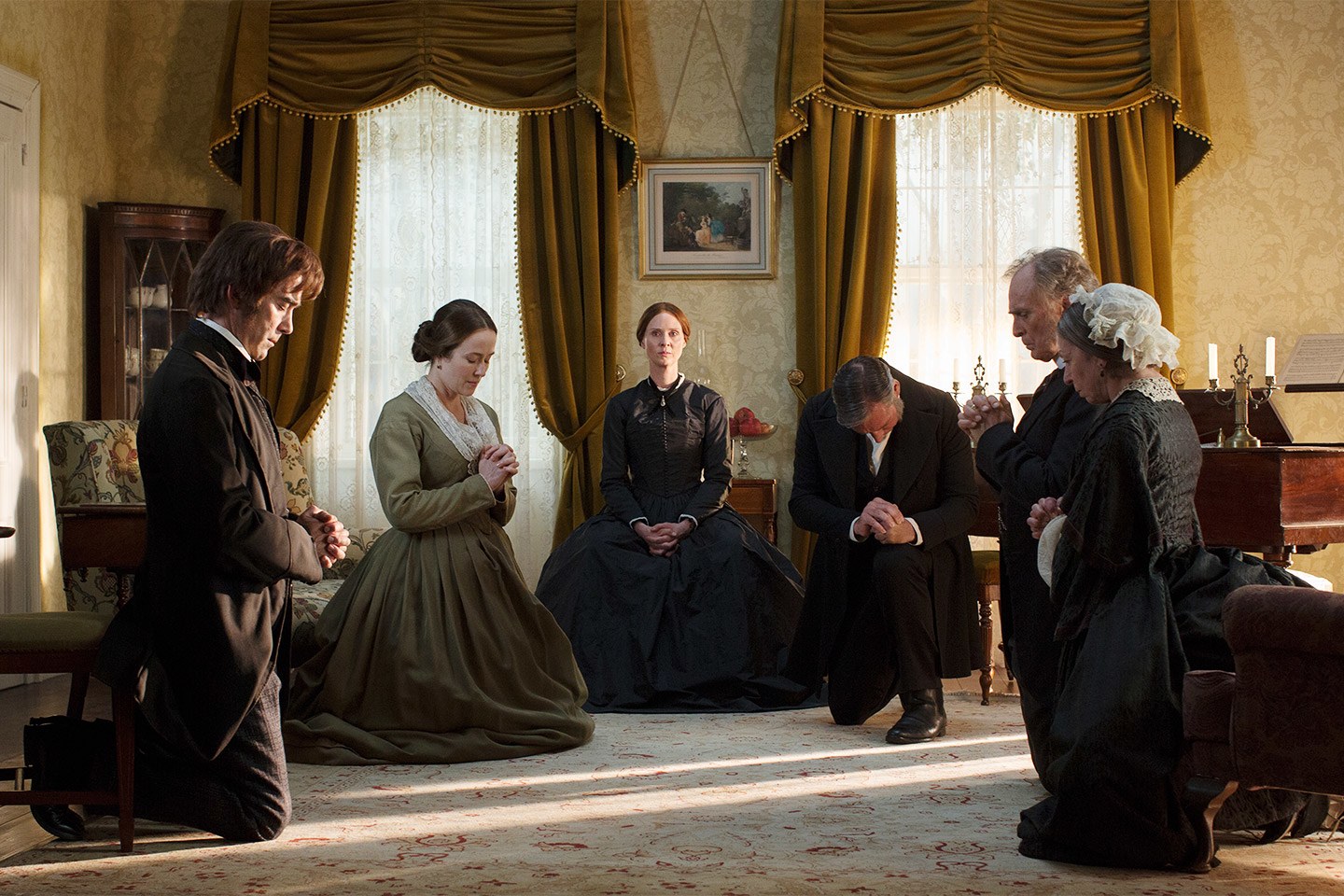
“A Quiet Passion,” written and directed by Terence Davies
Davies — Britain’s cinemaster of ex-Catholic, gay, working-class, spiritualized pain — uses film as a way of capturing whatever the forgetting mind can recall before the memory dissolves. His work (“Distant Voices, Still Lives,” “The Long Day Closes,” his autobiographical trilogy of short films) is informed by the trauma he endured at the hands of his abusive father, the Catholic Church and homophobic school bullies, but also by the love and hope he saw in his mother, his sisters, Ella Fitzgerald, poetry and cinema. They are radical testaments of faith and strength.
“A Quiet Passion” is Davies’ latest masterwork, a biopic about the American poet Emily Dickinson, starring Cynthia Nixon. It’s funnier and more buoyant than previous Davies films, despite the fact that it’s based around the increasingly isolated life of Emily Dickinson (who is given complex movie life by Nixon). Davies is the perfect person to make a film about Dickinson, since their work so thoroughly understands the thrill in creeping mortality.
Those who harp on Davies’ historical accuracy are missing the point: The unbridled joys that “A Quiet Passion” evokes. And what joy in this film! No, it’s not “joyful”, per se; in fact, it’s often glum and depressing and painful to watch. What makes a film like “A Quiet Passion” joyful is its respect of the sanctity of lived experience — of breathing, love, family, mortality and, of course, that thing which brings our lives in boldest relief: Art.
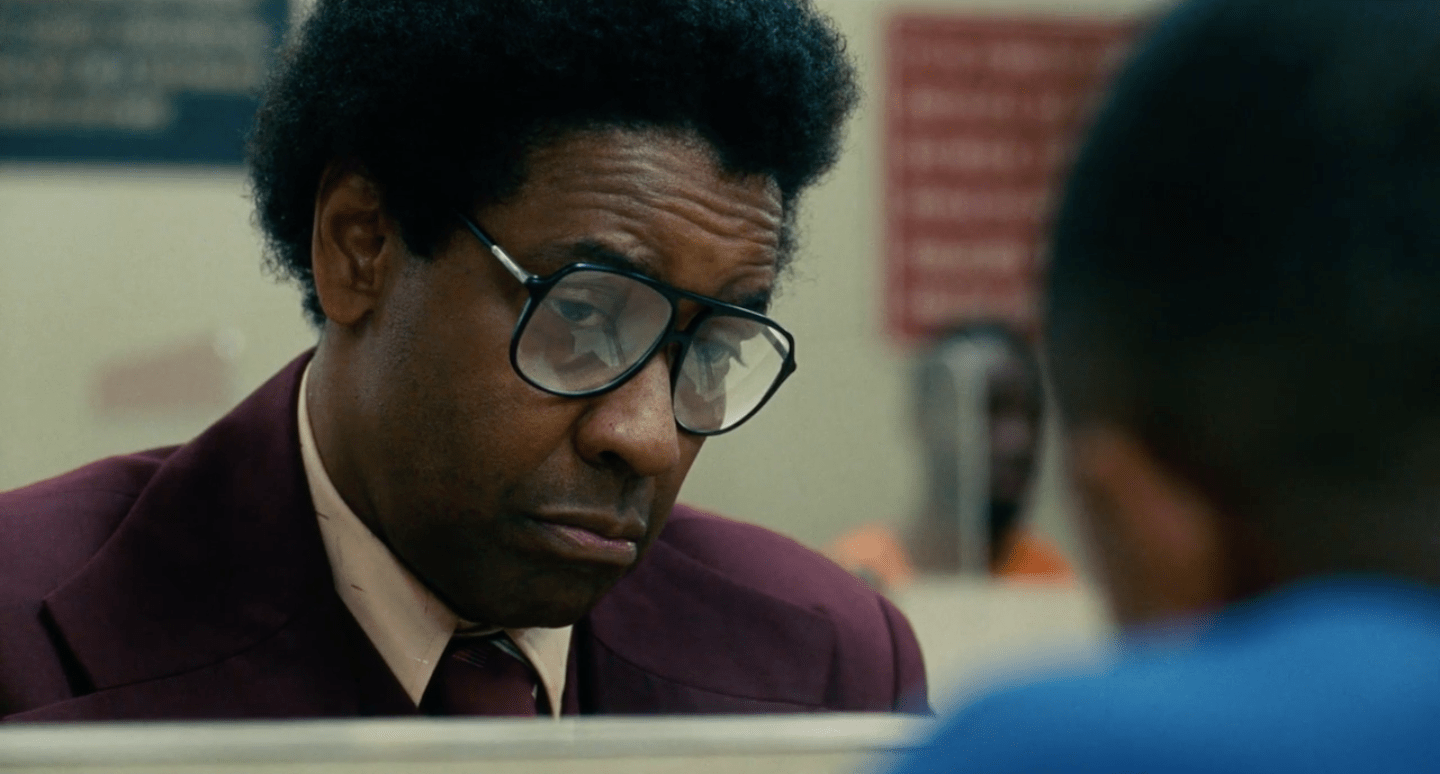
“Roman J. Israel, Esq.,” written and directed by Dan Gilroy
I have to say that I’m truly stunned by the mixed-to-negative reception of what strikes me as the most constantly surprising thriller released by a major American studio. It’s one where I truly forgot I was watching “a film,” so total was my investment. Its visuals (is this the Robert Elswit of the pure and raw “Desert Hearts” or the hazy and paranoiac “Inherent Vice”?) and its various genres (a detached and odorless gaze that makes it feel like a biopic, quiet Tati-like body comedy, crime procedural, morality play or thriller on the order of Coppola’s “The Conversation”) all reflects the inner tumult of its protagonist, a genius civil-rights attorney (Denzel Washington) who is slowly losing his grip in 2017.
It’s a stellar showcase for Washington’s talents. The calm, assured way Washington puts wrong-headed people in their place is a perfect counterbalance to the moments where he goes way over the line just to prove that he’s right (i.e., his circa-1970s fight over nonexistent chivalry with two Black woman activists of the 2010s). The genius of Washington’s performance is that he doesn’t over-emote, over-shout or over-mug — he plays his semi-nerdy smugness, earned righteousness and paranoia at the same subdued level.
It’s a truly 2010s film — confused, chameleon-like in its rich multiple identities, unsure of where to go. But the filmmaking is as steady and sure as they come. In many years, we’ll be kicking ourselves for sleeping on such a terrific movie.

“The Shape of Water,” directed by Guillermo del Toro, written by del Toro and Vanessa Taylor
Sure, I liked it enough. The production side of it (sets, colors [heavy 50s greens and blues], wistful music) all made me an immediate fan. While I’m generally suspicious of art thinly veiled as a way of cashing in on a politically convenient “NOW,” this is one film that doesn’t quite take the obvious route. It’s mainly because of the horrifying and un-audience-appealing key shifts at certain moments, like the cruel Michael Shannon character and the beautiful lovemaking scene in the makeshift tank. I thought of Flannery O’Connor’s Southern allegories a lot while watching it; while “Three Billboards” is like an O’Connor story gone badly off the rails, del Toro’s “Shape of Water” (even though it’s essentially optimistic and “positive”—but then again, I’m not so sure, given the quietly tragic fantasy of the finale) has a frank vision of today that I think she’d approve.
Yet part of me knows that “Shape of Water” functions as a mere placeholder on my list. It is a tall order to be on top of all the good cinema of any given year—and doubly so if one is still in college. Had I had the time and opportunity to see, before deadline, films like Frederick Wiseman’s “Ex Libris: The New York Public Library,” Abbas Kiarostami’s “24 Frames,” Dee Rees’ “Mudbound,” P.T. Anderson’s “Phantom Thread,” the Safdie Brothers’ “Good Time,” Todd Haynes’ “Wonderstruck,” maybe Noah Baumbach’s “The Meyerowitz Stories (New and Selected),” Kogonada’s “Columbus,” Nana Ekvtimishvili’s and Simon Groß’s “My Happy Family,” or Bertrand Bonnello’s “Nocturama,” at least one of these would have certainly taken “Shape of Water’s” place on my under-informed list.
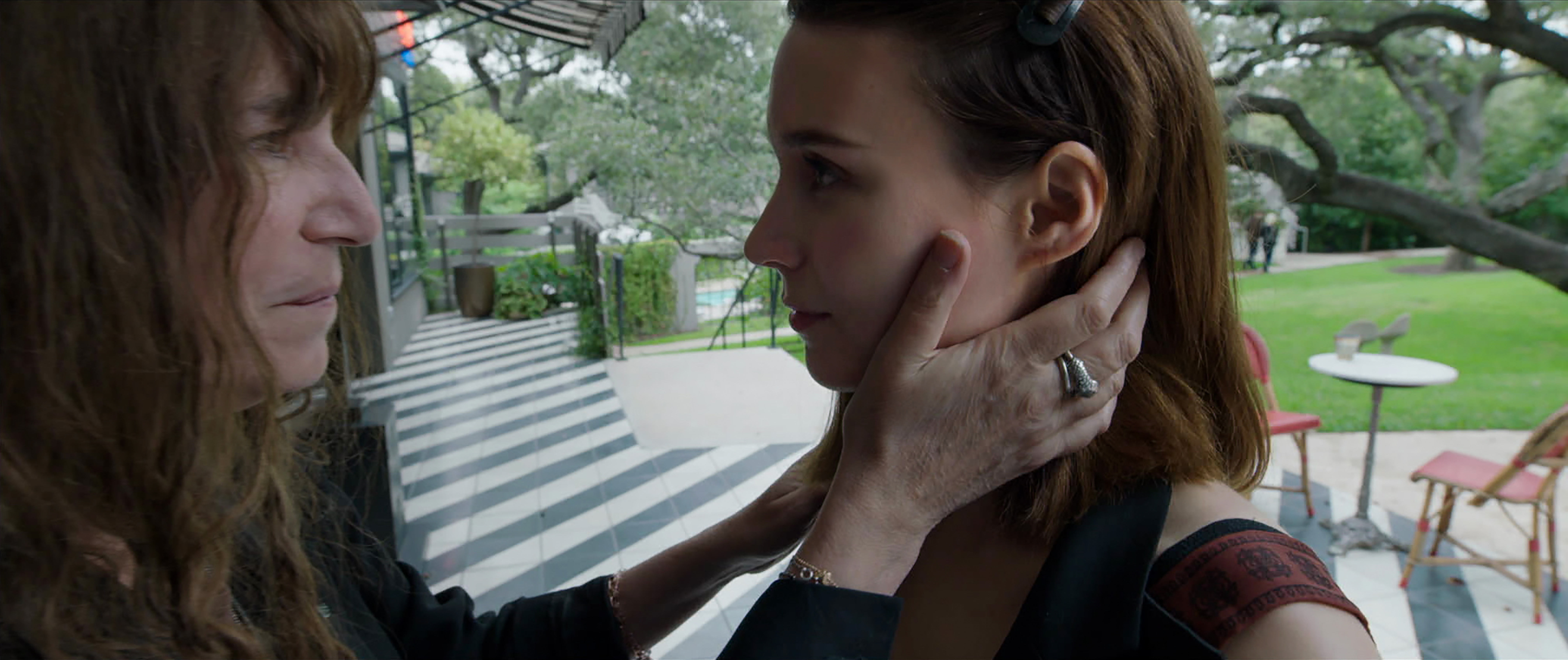
“Song to Song,” written and directed by Terrence Malick
As I’ve said before, I’ll stan for Late Malick any day. And the more I reflect on his abstract rock fairy tale “Song to Song,” the more I love it.
I wouldn’t be surprised if Terrence Malick’s “Song to Song” ended up being my favorite of his post-“Tree of Life” experimental work. I say that since it’s the one I struggled hardest to enjoy — and that’s, I think, a good sign. For the first two hours, I was sighing deeply and tapping my feet, feeling every second of the second hour. I worried that Malick had finally gone off the deep end into his own murky funk — but then! for the final half-hour, I was bolted to my seat, tracing the steps which led to my sudden love for what seemed like a self-indulgent boor.
“Song to Song” traces the increasingly mind-numbing sexploits of two musician gonna-be’s (The Great Gosling and Drab Fassbender) trying to figure out at what point in their coke-fueled affairs, orgies, betrayals did they stray off the cosmic art path. Fassbender plays God with women, treating them as heaps of meat and sex-dolls in ways that make your skin crawl; Gosling almost gets there, but MVP Rooney Mara asserts her presence and helps Gosling (and, more importantly, herself) see the spirituality s/he’s missing.
Its closest cousin is Richard Lester’s splintered, cold-shower romance “Petulia” (1968). What Lester’s bitter pill was to the hippy-dippy ’60s, Malick’s spiritual balm is to the insufferably ironic and fractured 2010s. “Song to Song” is necessary for its times, offering contemplation in an age where we need stimulation, fast, now. Malick’s film believes (either naïvely or bravely) in the Spirit’s eleventh-hour triumph over an ugly atmosphere of misogyny, a lack of modern faith, loveless sex, drugs, selfishness, snobbery and hip nihilist distance.
A few other good films I watched this year: Raoul Peck’s “I Am Not Your Negro,” Hirokazu Koreeda’s “After the Storm,” Alexander Payne’s woefully maligned “Downsizing,” Pixar’s “Coco,” João Pedro Rodrigues’ “The Ornithologist,” and Steven Spielberg’s “The Post.” This final do-gooder film about the Now, with Tom Hanks and Meryl Streep in wonderfully mannered gruff-accents, is quite well made. However, its chin-up, back-patting, distanced Liberal piousness made me hunger for something with a little more bite—maybe a snappy, cynical newspaper comedy à la “His Girl Friday” set in a Trump-era newsroom.
Contact Carlos Valladares at cvall96 ‘at’ stanford.edu.
